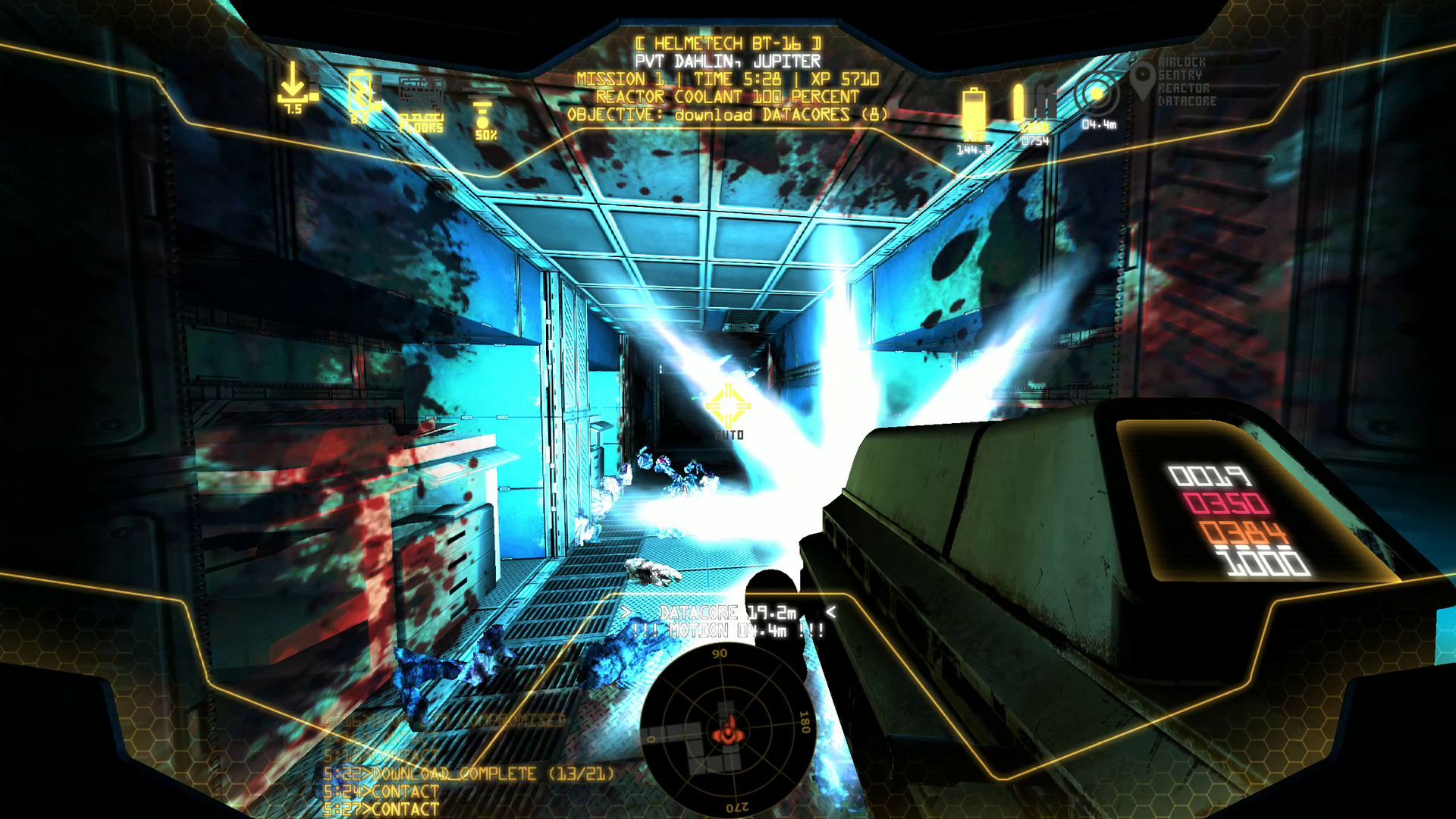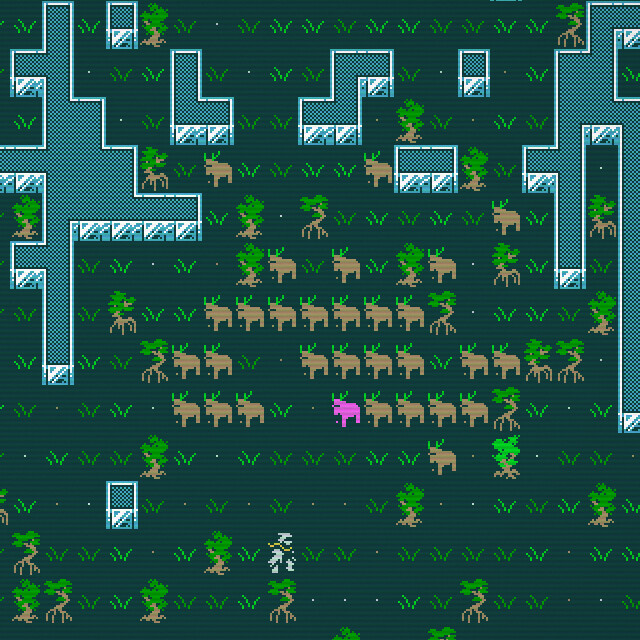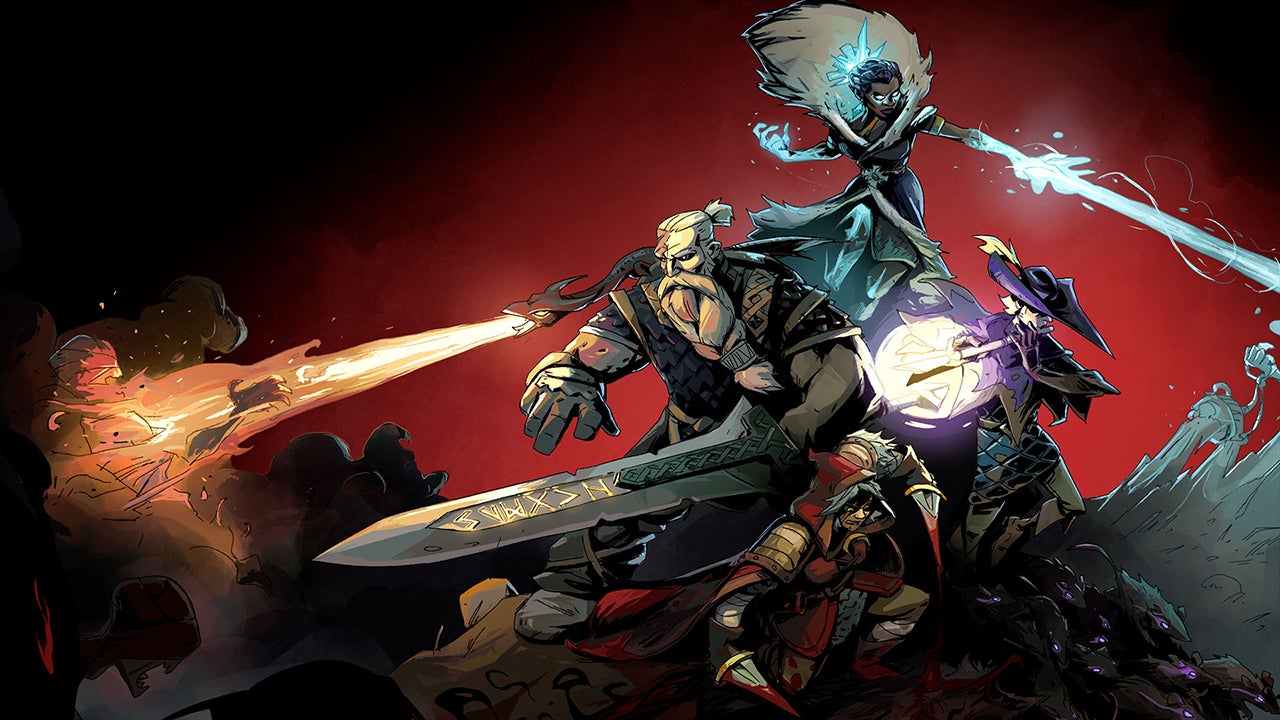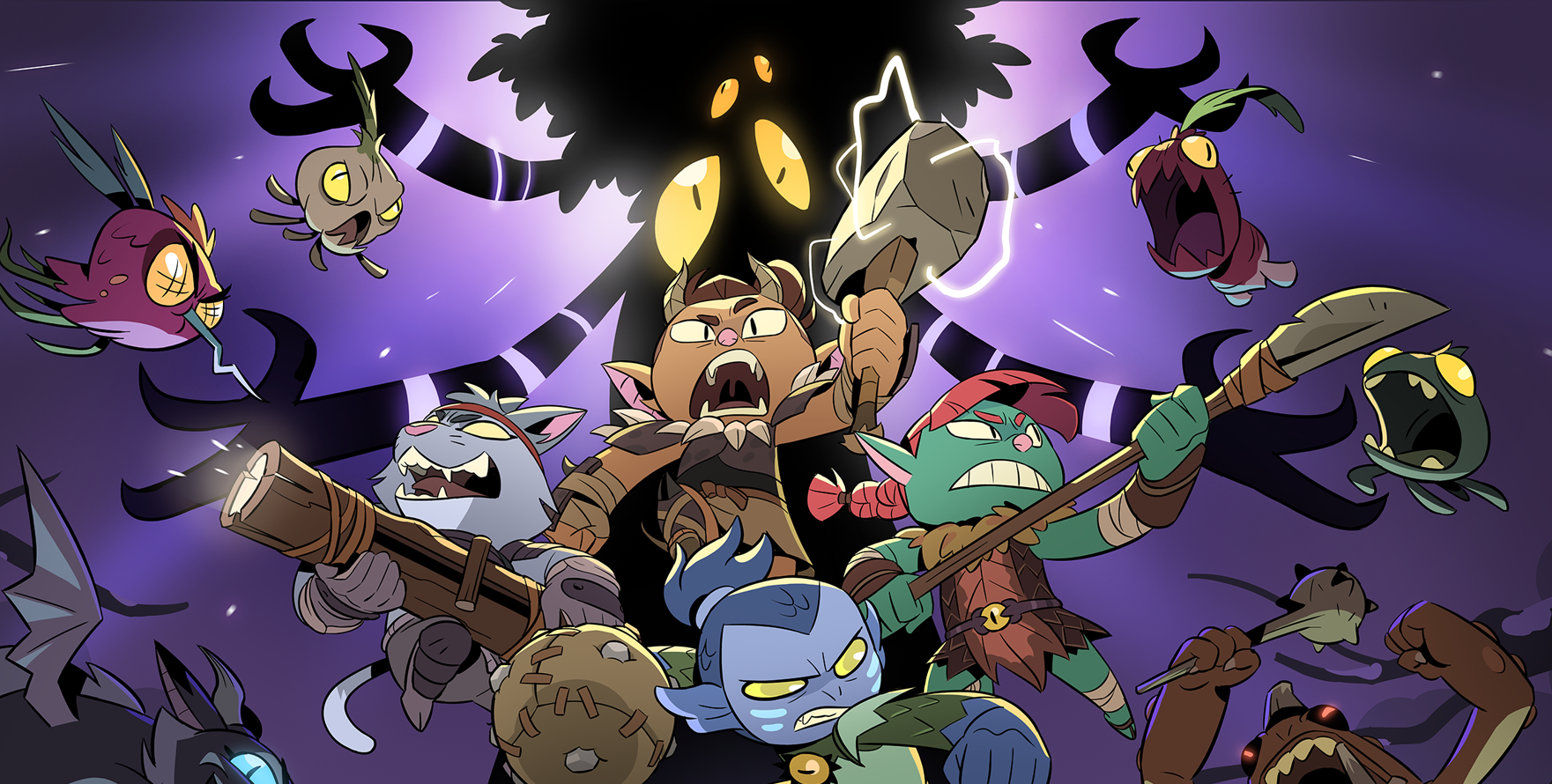Realm of Ink is an exciting up-and-coming action-roguelite by Leap Studio and Maple Leaf Studio, and it was announced late last year, at which time it received a warm welcome from myself and a number of other online publications.
You can find out what I think about the game after playing the newly released demo, but stick around here to find out more about Realm of Ink from the people who are actually making it. To be more precise, the following is a blending of words from Dai Ningkun (CEO of Leap Studio), Wang Chunhui (CEO of Maple Leaf Studio), Cai Cihang (Lead Artist of Leap Studio), and Liu Liang (Lead Designer of Leap Studio), with the questions provided by yours truly.
There is loads to unpack in the interview below, including insights into the game’s cultural origins, its bold artistic design, how that art style has impacted the game’s overall development, and much more. It’s a fascinating read and my bit is probably the least interesting part, so I’ll cut the intro here and head straight to my first question.
MH: How might you describe Realm of Ink in one sentence? What’s the “elevator pitch”?
When Hades provides a more accessible and aesthetically pleasing satisfaction in a way of exquisite oriental elegance.
The art style is interesting – please tell us how this came to be.
Determining our game art style was a step-by-step process. Our inspiration originally came from the static expression of traditional Chinese ink painting. This unique art form is relatively rare in modern games. It just so happens that we are very good at this style ourselves. But with the development of the game, we gradually discovered that the traditional ink painting style requires certain adaptation and adjustment in the dynamic game environment.
Our goal was to find a way to embody traditional Chinese ink art while adapting to the visual needs of modern games. In this process, we referred to Western visual logic, such as precise morphological expression, and combined it with the traditional freehand style. This fusion not only retains the essence of ink painting, but also makes the visual style of the game more in line with the aesthetics and gaming experience of modern players.
Through constant experimentation and iteration, we eventually developed a unique visual style. This style not only has the shadow of traditional Chinese painting, but also adds the dynamic elements of modern games, forming a new visual language. We hope that this unique visual style will bring a new gaming experience to players, while also giving traditional art a new lease of life in the digital age.
Our game art design goal is to highlight the Chinese style while taking into account the playability of the game and the sophistication of the art.

In the initial conceptual stage, we first conducted a certain exploration of Chinese style art. We tried to capture a unique atmosphere. Based on this concept, we began to design the actual game maps and scenes, but soon we realized that if we relied too much on the freehand Chinese style, it might cause problems in gameplay, such as insufficient space for players to operate, or the map The edges are not clear enough.
Therefore, we made certain modifications to explore how to integrate the freehand Chinese style into a game map design with a more spatial sense and clearer edges. We found that an overly expressive style would look rough and sketchy in the game’s actual aspect ratio, especially when viewed up close. Therefore, we turned to a more detailed depiction method, which is more like gongbi painting, in order to retain the characteristics of Chinese style while improving the level of detail in the picture.
In the final optimization stage, we comprehensively considered and balanced the detailed depiction of gongbi and the application of Chinese-style colors. We conducted in-depth discussions on color expression and volume to ensure that while retaining the characteristics of the Chinese style, we can also provide a clear, detailed visual experience that is suitable for gameplay. Through this series of adjustments and optimizations, we finally reached the current art style. The current art style not only shows the charm of national style, but also meets the needs of gameplay.

Are there any references from gaming or pop culture that you think have been particularly inspirational to the team?
Grim Dawn and Skul: The Hero Slayer
Our Ink Gem is similar to a miniature profession. When a player has two Ink Gems, it is equivalent to a combination of two professions. The most basic part of this gameplay is a game I like very much called Grim Dawn, which is a synthesis routine that combines two professions freely to form a third profession. You can get 1 + 1 greater than 2. Various such rich combinations can be combined with a certain number of calligraphy treasures.
In fact, it is similar to Skul: The Hero Slayer. It has two skulls, and there are combinations, but the combination between its skulls is relatively small, but its forms are very similar.
Are there any interesting gameplay mechanics that have arisen directly because of the painterly art style?
It has an impact, because both the monster and the player in our game are made of ink. Compared with other games, it is more integrated, so our attacks will focus on a very smart and elegant type. The skills can cancel each other, and you can also use sprint to cancel the attack. The form of judgement we use to cancel attacks is the most exaggerated among similar games, because it is a form that conforms to a type of ink that is softer and more coherent than the fusion. It’s not like some games where the interruption conditions are very harsh.

How does the story intersect with the art and the gameplay?
In our story, Realm of Ink is a collection of Chinese-style fantasy novels, and the story takes place in its book world. The characters in it are all spirits and monsters with Chinese characteristics. They are forced to follow their own story lines and repeat their fate day after day. One day, while chasing the Fox, our heroine Red accidentally discovered this incident and awakened her true self. She is determined to find a way to escape from the world in the book, and regain her own destiny and freedom.
The plot presentation is mainly a fragmented narrative. We will weave group character stories and philosophical propositions that can make people think into the game system, dialogue lines and other places, in small amounts and multiple times, so that players can understand them more easily.
There is a clear logical relationship between the story of a single scene and the plot of the entire game in the underlying design. Each story looks at the theme of our game from a different perspective.
(The theme of our game is to break away from the book, which can be understood as escaping from the world in the book, awakening oneself, and controlling one’s own destiny. And each scene’s story symbolizes different people’s views on controlling their destiny. Different attitudes towards this matter. For example, some people may accept their fate obediently. Some people may be self-paralyzing and deceive themselves.)

What are you most proud of in terms of the demo?
Although there is always a desire for perfection and improvement, the core concept, artistic expression and gameplay design of the game have all met our expectations.
We basically make significant updates to every version, both in terms of art and gameplay. After each iteration, we will show it to dozens of industry peers and collect their feedback. We will organize them, pay special attention to those with high commonality, and decide to improve it in the next version. While retaining our original intention and persistence, we have made corresponding optimizations to various suggestions and opinions. After five or six iterations, we gained recognition from friends in the industry, which has boosted our confidence in the game.
During the development process, player feedback is very important to us, such as feedback on level difficulty and art style. We have made many changes based on this feedback, such as adjusting level difficulty and fine-tuning art elements to better balance challenge and playability while ensuring the game is also attractive to international players. These changes can help us continuously improve the quality of the game and better understand the target player group.
Overall, we still have a lot of room for improvement in game design and various details. We still need to continue to polish the game’s combat feel and move combination, especially the design of enemies. We have not yet reached the level of exquisite design like Hades, the industry benchmark, and we need to continue to refine and modify it.

What kind of experience do you want players to have?
In the beginning, our team did a lot of creative exploration. We made a very, very long list of game options, but in the end we chose Liaozhai as the story background, and a roguelite type that combines action game elements. Liaozhai was selected for its classical story framework, offering significant narrative potential. Coupled with the excitement of an action game, it promises players a distinctive and captivating experience.
In terms of game experience design, we mainly focus on three aspects. The first is the exhilaration of action games. We hope that players can feel smooth and refreshing in operation. Secondly, the richness of the BD system gives players a wide range of choices and matching options. Finally, we also focus on bringing players a sense of satisfaction on a numerical level, allowing them to feel obvious growth and strengthening during the game.
In general, the motivation for the creation of Realm of Ink is that we hope to combine traditional Chinese culture and modern classic game mechanics to create a game world that is both deep and can bring immediate pleasure. We hope that players can not only experience the excitement of action games , but also deeply feel the charm of Chinese classical culture.

What kind of difficulty settings will there be, and what sort of accessibility options do you have planned?
Realm of Ink is a traditional action roguelite game, which is mainly divided into two parts: external development and internal development. The specific gameplay mainly consists of four parts. They are sacred skills, Ink Gems, perks, and Ink Pets. These game mechanics and systems are designed with the concept of complementing and reinforcing each other. By operating in cycles, players can build and optimize their own combat strategies and styles to achieve better performance in the game.
Specifically:
First of all, sacred skills determine the basic attack form of the player character, which mainly affects the player’s operation mode.
The Ink Gems system is the core mechanism of the game. It provides players with a series of passive skills and strong active skills. Each Ink Gem has its own unique theme. Players can collect related enhanced equipment around these themes and build a formed combat strategy. Players can carry up to two Ink Gems. Each Ink Gem will have some complementarity according to the genre theme. Two Ink Gems are like two different professions. As long as they are matched well, players can get twice the result with half the effort during the game.
The perk system is another important factor in building the combat theme. It gives players different passive attributes, and players can collect unlimited treasures, each of which has its own bonus effect. Perks can also form a coupling effect with Ink Gem and Ink Pet systems, and combined with the game mechanism of roguelites, it can make your own build system more complete and enhanced.
Finally, the Ink Pet system is a branch system that is strongly coupled with Ink Gem. It is an extension of Ink Gem, and many of the iconic features of Ink Gem are reflected in the calligraphy pet system. This system can bring direct positive feedback to players and enhance the overall game experience.
There are two main points of difficulty in this type of game. The first point is that in the early stage, before the player’s build has taken shape, players need to rely mainly on more basic operations in the game, such as dodge, to deal ideal damage. In addition to the difficulty caused by basic operations in the later stage, build selection is also required. You need to choose the correct build route around the expected build to achieve the efficiency you want.

Can you tell us any fun dev stories where you’ve broken the game with overpowered builds?
Such as art. The purely Chinese ink-and-wash art style is not suitable for games. To put it simply, the traditional ink-and-wash style does not have much concept of space and pays more attention to the conveyance of artistic conception. However, if it is placed in a game, the expression of the picture will be weak and the space will be weak. It feels flimsy, and the various elements of the game have no focus. The static performance may be good, but when it moves, the sense of space in the picture is instantly lost, and the freehand style results in no details where details are needed, and the overall expressiveness is much worse.
For another example, in the early exploration of planning, we also started as a poor imitator. We used the traditional idea of the five elements to complement each other to design the gameplay. However, during the production process, we gradually discovered that this gameplay has many limitations. It will lead to adverse effects such as insufficient depth and excessive understanding threshold in the later stage. This is a version we’ve all been working on for a long time. Sometimes only by giving up decisively can we usher in a better self, and only by stepping on pitfalls can we know what is the right direction.
The above mentioned are all design-level refactorings. Of course we also have code refactorings. Everyone is a beginner, including our programmers. They have also been growing along with game development. From hard-writing functions to having our own architecture, we have gone through many code reconstructions during this period. The most recent code refactoring took place in April, and our programmers redid the game almost within a month.
And further to that, what’s the biggest challenge when balancing gameplay?
For Ink Gem, the matching of dual-professional builds is challenging. Just like the chemical reactions formed by different elements may yield quite different effects, the combination of certain two Ink Gems will be better, while the other two will be worse. When designing calligraphy, we do not consider it individually. We need to consider the strength of two calligraphy pieces together. There are more things that need to be considered in terms of balance. Our goal is that different combinations will make players more comfortable and strengthen weaker genres after they are formed.
Well I don’t know about you, Dear Reader, but I thought that was a most interesting exploration of the themes and gameplay concepts that are informing Realm of Ink. For more on the game, check out my hands-on preview.



